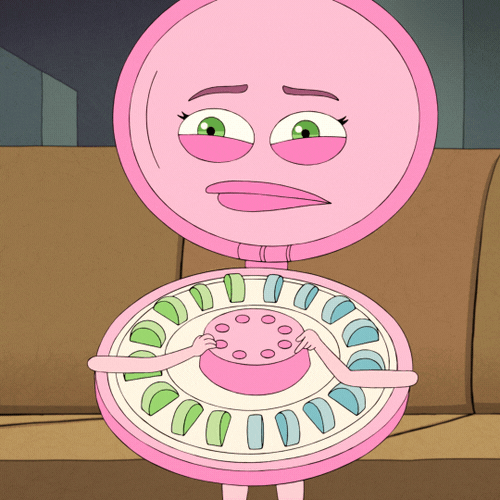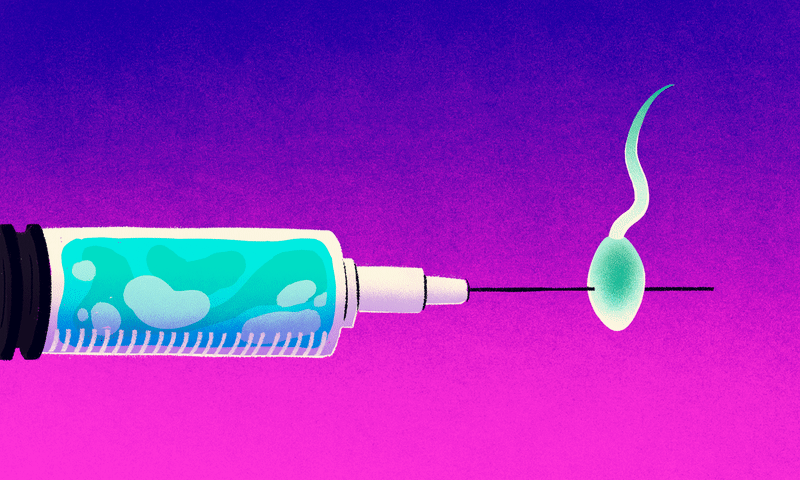It’s a cruel joke of nature that your reproductive abilities are at their strongest when you’re young and don’t want to be a parent. Thankfully, there are more forms of contraception on the market than ever before. Preventing pregnancy is actually pretty easy; the hard part is understanding which kind of birth control to use and how to make it as foolproof as possible. We’re breaking down the most common kinds of contraception (and the ways they fail) so you can understand what she’s using or discover a new method together.
Protect yourself: The Mandatory Guide to STD Awareness Month (Using Popular TV to Demonstrate the Feeling)
Whoops: What To Watch When You Accidentally Get Your Girlfriend Pregnant
Follow Mandatory on Facebook, Twitter, and Instagram.
Birth Control Guide
-
Pulling Out

Consider this your in-case-of-emergency contraception. The method is in the name and it’s all about timing. Come anywhere you want (with her consent) as long as it’s not inside her and you might be safe.
It might fail if: you aren’t fast enough on the withdrawal or your pre-cum contains sperm that manage to make it to her egg.
Failure rate: 22 percent
STD protection: No
-
Fertility Awareness Method (FAMs)

Also known as the rhythm method or natural family planning, this homeopathic approach to contraception relies on daily temperature-taking, monitoring cervical mucus (ask her about it; it’s kind of wild), charting, and other methods that indicate what stage of her cycle she’s in. Women aren’t fertile every day of the month, and during her non-fertile windows, you’re free to have unprotected sex. Figuring out when the safe days are can be complicated and requires diligence, but it spares her the hellish hormones and devices associated with other forms of birth control.
It may fail if: she doesn’t take her basal body temperature immediately upon waking every day, if she doesn’t study up on how to identify fertile and non-fertile days in her cycle, or if she ovulates off-schedule or twice in one cycle.
Failure rate: 12 – 24 percent
STD protection: No
-
Traditional Condoms

Condoms are the everyman’s contraception. They’re cheap, widely available, and easy to use. The bummer? They deaden sensation. They also require you to plan ahead because (news flash) they only work if you use them!
It may fail if: the condom has a tear, it breaks, comes off during sex, or you use incompatible lubricants that weaken the latex.
Failure rate: 15 percent
STD protection: Yes
-
The Internal Condom

Think of a condom, inside out, that she inserts in her vagina like a tampon. The condom has two rings: one that hugs her cervix and one that surrounds her vulva (and if you don’t know what those parts are, get thee an anatomy lesson). Her enjoyment get short shrift in this scenario, but you are free to move about as you please within the plastic parachute. Internal condoms (formerly known as "female condoms") are slightly more expensive than traditional condoms, so be prepared to help pick up the tab.
It might fail if: there’s a tear in the condom, it comes out during sex, or sperm spill inside her while removing the condom.
Failure rate: 21 percent
STD protection: Yes
-
The Pill

Birth control pills involve taking a hormone-containing medication at the same time daily throughout her cycle. Sounds simple enough, but those fashionably packaged pills can pack quite the hormonal punch, causing side effects that range from weight gain to depression to breakthrough bleeding. If one type of pill doesn’t agree with her, she should talk with her OB-GYN about switching pills or choosing another kind of birth control.
It might fail if: she forgets a pill, stores them improperly, or takes certain antibiotics, medications, or herbal remedies during her cycle.
Failure rate: 9 percent
STD protection: No
-
The Sponge

An ‘80s birth control relic that was once taken off the market by the FDA, the sponge is inserted into the vagina and works by covering the cervix and killing off sperm with spermicide. Its main appeal is that it’s a hormone-free alternative to condoms, but the lame effectiveness rate makes this a barely-better-than-nothing option. For a good time, watch the Seinfeld episode on this topic.
It might fail if: she doesn't leave the sponge in for six hours after sex.
Failure rate: 12 to 24 percent
STD protection: No
-
The IUD

This T-shaped contraption comes is inserted into her uterus by a doctor. All IUDs work by blocking sperm’s path to the egg; the old-fashioned IUD repels sperm because it contains copper while the modern version contains hormones that suppress ovulation. IUDs are not permanent, but they are long-lasting; she can keep it in for up to 12 years.
It might fail if: she somehow ovulates despite the hormones or sperm slip past the barrier.
Failure rate: 1 percent
STD protection: No
-
The Vaginal Ring

This is one kind of ring you can totally afford to buy her (and, seriously, you should offer to chip in on birth control costs; it’s the chivalrous thing to do). She inserts the ring in her vagina and it releases hormones that prevent ovulation. She wears the ring for three weeks per month, then removes it to have her period, and starts a new one on the next cycle.
It might fail if: she removes the ring too early in her cycle, if she leaves it out too long, or if it falls out.
Failure rate: 9 percent
STD protection: No
-
The Cervical Cap

This tiny silicone cup is inserted over her cervix and, with spermicide, prevents sperm from reaching the egg. It can be tricky to insert, so she has to be very comfortable digging around up in there for it to be situated properly.
It might fail if: it’s inserted improperly, used without spermicide, or sperm wiggle their way around it.
Failure rate: 14 to 29 percent
STD protection: No
-
The Diaphragm

This vintage form of birth control was all the rage in the '80s. Like the cervical cap, it's placed over the cervix, requiring some mad hand skills. It’s most effective when used in tandem with spermicide because, let’s face it, barrier methods kind of suck.
It might fail if: it’s inserted improperly, it's used without spermicide, or sperm wiggle their way around it.
Failure rate: 12 percent
STD protection: No
-
The Patch

All she has to do here is slap a patch on her upper arm, belly, back, or butt (and you can totally help her with that) and she has pregnancy protection for three weeks. Then she’ll have a patch-free week for her period before starting the process all over again.
It might fail if: she doesn’t store replacement patches properly, forgets to change the patch on time, or it falls off.
Failure rate: 9 percent
STD Protection: No
Photo: BSIP (Getty Images)
-
The Shot

A shot of Depo-Provera every 12 to 13 weeks stops ovulation in its tracks. The downside is that generally only a nurse or doctor can give it to her, so she has to make regular clinic appointments and keep them.
It might fail if: she misses her shot appointment or she somehow ovulates despite the medication.
Failure rate: 6 percent
STD protection: No
-
The Implant

A doctor can slide a hormone-packed matchstick-sized tube under the skin of her arm that prevents pregnancy for up to five years. Sounds great...unless she doesn’t have insurance, in which case, this is going to hurt. Approximate price tag: $1,300. (That’s still cheaper than a baby, though.)
It might fail if: she somehow ovulates despite the hormones.
Failure rate: 1 percent
STD protection: No
-
Sterilization

A vasectomy (for you) or a tubal ligation (for her) are the most effective forms of contraception (other than abstinence). But they’re also surgical procedures and are considered permanent. Unless you already have kids or are aging out of your prime reproductive years, think twice before you go under the knife. While these methods might be tempting because many insurance plans will pay for them, there's long-term potential for regret. Though both procedures can be reversed, the reversals are intense and costly and may not restore your virility full-force.
It might fail if: the surgery didn’t take or your super sperm find a loophole.
Failure rate: 1 percent
STD protection: No
A final note: Because there are many more methods than those listed here, it’s best if you consult a pro, like the helpful people at Planned Parenthood, for in-depth info on all your options.









